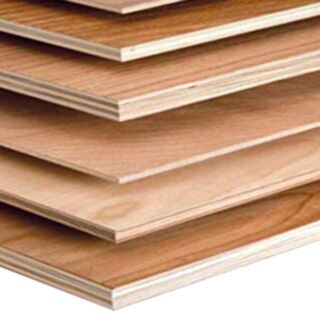- VAT: Inc Ex
- Shop
- Back
- Building Materials
- Back
- All Building Materials
- Cement & Aggregates
- Concrete Products
- Underground
- Radon
- DPC & Polythene
- Roofing Materials
- Roof Windows
- Fascia, Soffit & Ventilation
- Sealants & Adhesives
- Fixings
- Tools
- Metal / Steel Products
- Airtight Membrane
- Safety
- Paint
- Electrical Accessories
- Workwear
- Drainage
- Tiling
- Ironmongery
- Timber
- Insulation
- Doors & Floors
- Plastering
- Heating & Renewables
- Plumbing
- Bathrooms
- Outdoor & Landscaping
- Special Offers
- Customer Support
- Get a Quote
- Apply for Trade Account
- Contact Us
- Order Line: [email protected]
Ex Vat Inc Vat
Select postcode to see availability
Collection From: Bluebell
Hardwood Faced Plywood
Hardwood Faced Plywood
These are suitable for structural applications (CE2+) Species for humid conditions (EN636/2). Hardwood plywood refers to any panel product in which the face of the panel is made of hardwood veneer.
Hardwood plywood panels are perfect for hundreds of end use applications. Some of the more common uses are finished furniture, cabinets, casework, doors, fixtures and displays, and a wide variety of other industrial, residential and DIY applications.
Plywood Buyers
Plywood is an extremely versatile product. It is used for a wide range of interior, exterior and structural applications - from shuttering formwork through to internal finish grade plywood.
Plywood is basically a number of thin pieces of wood bonded together to produce a flat sheet. The biggest differences between each type of plywood are:
1. The overall thickness (6mm, 12mm, 18mm etc)
2. The type and quality of timber used (Birch, hardwood etc) and
3. The grade and certification standard of plywood specified (BB/BB, CE2+ EN636/2 etc)
Care and Handling of Plywood
General Storing and Handling
Plywood, like any other panel product, requires proper handling and storage. Despite its sturdy cross-laminated construction, face veneers, panel edges and panel corners are vulnerable to damage and should always be protected.
Plywood is manufactured at a low moisture content and while small changes in moisture content will not appreciably affect its dimensions, large changes should be avoided since they may encourage checking of the face veneer with consequent impairment of its qualities as a paint base. It is good practice to store plywood which is to be used for interior finish under conditions that approximate those it will experience in service.
Points to watch when handling plywood are:
1. Store plywood panels flat and level.
2. Keep finish faces inward and cover stacks to protect from bumping and abrasion.
3. Protect panel edges and corners. This is especially important with tongue and groove plywood.
4. Carry panels on edge (always being careful not to damage faces, edges and corners).
5. When plywood is used as a finishing material, deliver to job-site at the last possible moment.
6. Protect panels from sunlight, water or excessive humidity.
7. All cut edges should be sealed with a good quality varnish or oil based paint.


